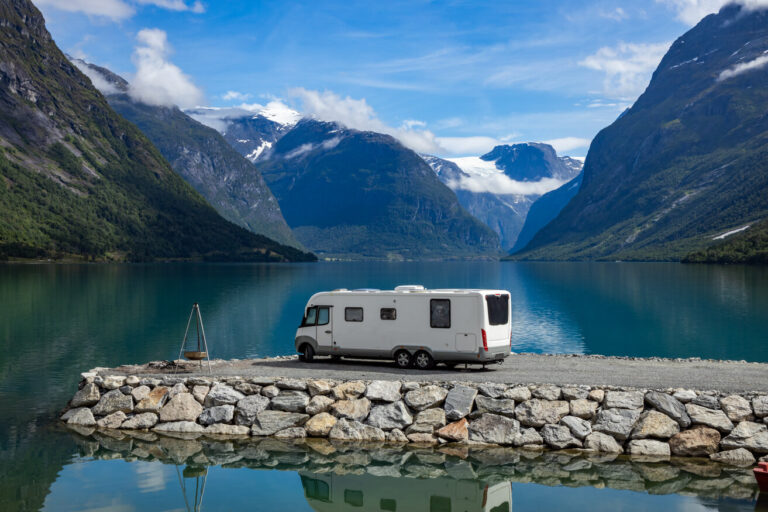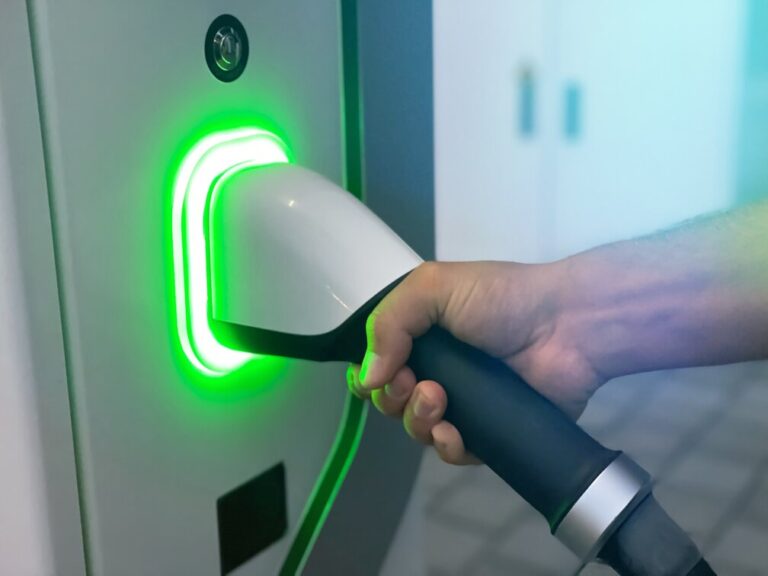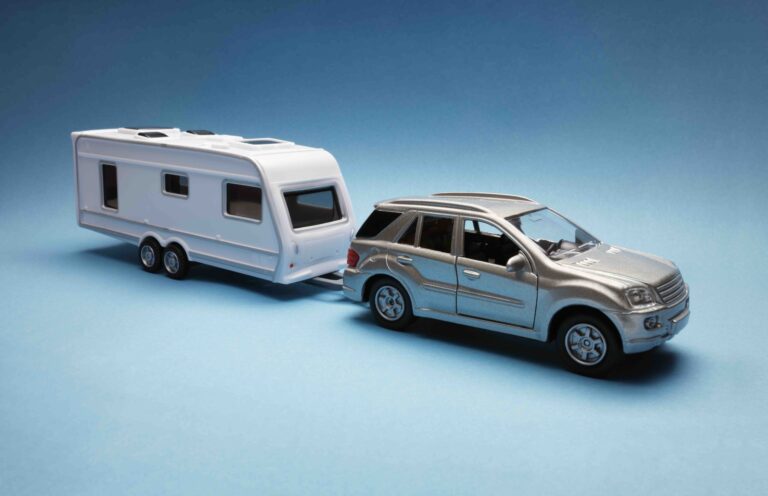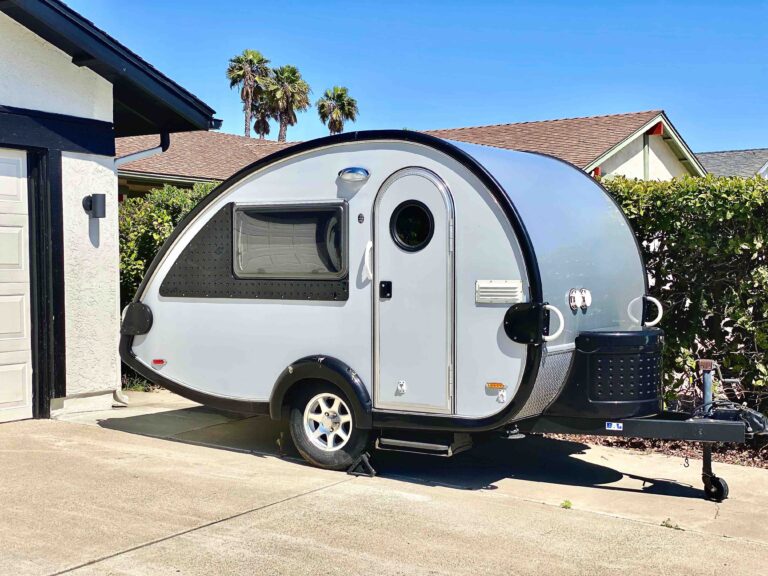Caravan dehumidifier 101 : Guide, Tips, and Products.
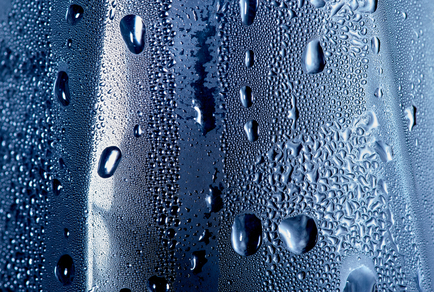
Why do you need a dehumidifier in your caravan?
Have you ever considered how high humidity levels can wreak havoc on your home away from home? I wrote this article as I have the same issues in mine .
Well, that’s where a caravan dehumidifier comes into play. Caravans RV’s and Motorhomes are susceptible to moisture buildup due to their confined spaces and lack of proper ventilation.
As you go about your daily routine , moisture from cooking, showering, and even breathing?? can accumulate inside the caravan.

This excess humidity not only creates an uncomfortable environment but also poses significant risks to the integrity of your beloved mobile abode.

The impact of high humidity on your caravan’s interior
High humidity within a caravan can lead to numerous problems that extend beyond mere discomfort. Excess moisture in the air can cause condensation on windows and walls, leading to unsightly water stains and potentially damaging the structure over time.
The dampness can also foster the growth of mold and mildew, which not only affect aesthetics but also pose serious health risks. Furthermore, prolonged exposure to high levels of humidity can warp wooden furniture or fixtures inside your caravan.
This could result in costly repairs or replacement down the line. Not to mention the unpleasant musty odors that tend to accompany excessive moisture – an unwelcome scent that no road-tripper should be subjected to.
Benefits of using a dehumidifier in your caravan
Now that we’ve established why keeping humidity at bay is crucial for maintaining your on-the-go oasis let’s explore how a dehumidifier becomes an indispensable ally in this endeavor. By investing in a quality caravan dehumidifier, you can actively regulate the moisture levels inside your mobile home. A dehumidifier works by extracting excess moisture from the air, leaving behind a drier and more comfortable environment for you to enjoy.
This not only helps prevent condensation on windows and walls but also minimizes the risk of mold and mildew growth. Moreover, a dehumidifier can aid in preserving the integrity of your caravan’s interior.
By reducing humidity, you can mitigate the risk of warping or damage to wooden surfaces, ensuring that your furniture and fixtures remain in top-notch condition throughout your adventures. In addition to these practical benefits, a dehumidifier also contributes to creating a healthier living space within your caravan.
By reducing moisture levels, you minimize the potential for respiratory issues caused by mold spores or allergens present in humid environments. So, if maintaining a comfortable, dry, and healthy environment inside your caravan is high on your priority list (as it should be), then investing in a reliable dehumidifier is an essential step towards achieving that goal.
Understanding Humidity Levels in Caravans
Ideal humidity range for caravans
When it comes to maintaining a comfortable and healthy environment in your caravan, understanding the ideal humidity range is crucial. The recommended humidity level for caravans typically falls between 40% and 50%.
This level ensures that the air is not too dry, which can cause discomfort, but also not too humid, which can lead to mold growth and other issues. Striking this balance is essential for preserving the integrity of your caravan’s interior and preventing damage caused by excessive moisture.
How to measure humidity levels in your caravan
Measuring the humidity levels inside your caravan is relatively simple with the help of a hygrometer. A hygrometer is a device specifically designed to measure relative humidity.
TIP: Once you have one at hand, place it in a central location within your caravan away from any direct sources of moisture or heat.
You can find various types of hygrometers on the market, including analog and digital ones.
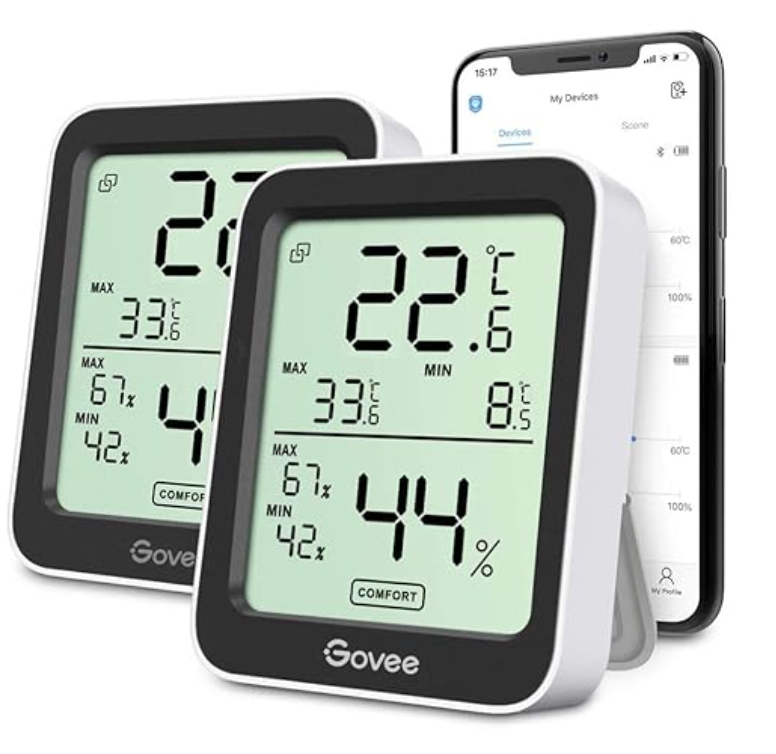
Allow it some time to adjust to its surroundings before taking a reading. The hygrometer will provide you with an accurate measurement of the current relative humidity inside your caravan so that you can determine whether it falls within the desired range.
Factors that contribute to high humidity in caravans
Several factors can contribute to high humidity levels within caravans. One primary factor is POOR VENTILATION. Limited airflow prevents proper evaporation of moisture generated from cooking, showering, or even breathing inside the confined space of a caravan.
Weather Conditions
Additionally, external factors like weather conditions can play a role. If you are camping in an area with high atmospheric moisture or experiencing rainy weather, it’s likely that these external sources will impact your caravan’s interior as well.
Insulation
Inadequate insulation or sealing may allow moisture infiltration into your caravan, further exacerbating the humidity issue. Being aware of these contributing factors can help you address them effectively and maintain optimal humidity levels inside your caravan.
Humidity
By understanding the ideal humidity range, measuring relative humidity with a hygrometer, and identifying the factors that contribute to high humidity, you can take proactive steps to regulate moisture levels within your caravan. This knowledge will enable you to create a comfortable and healthy environment for your travels while protecting your caravan from potential damage caused by excessive moisture.
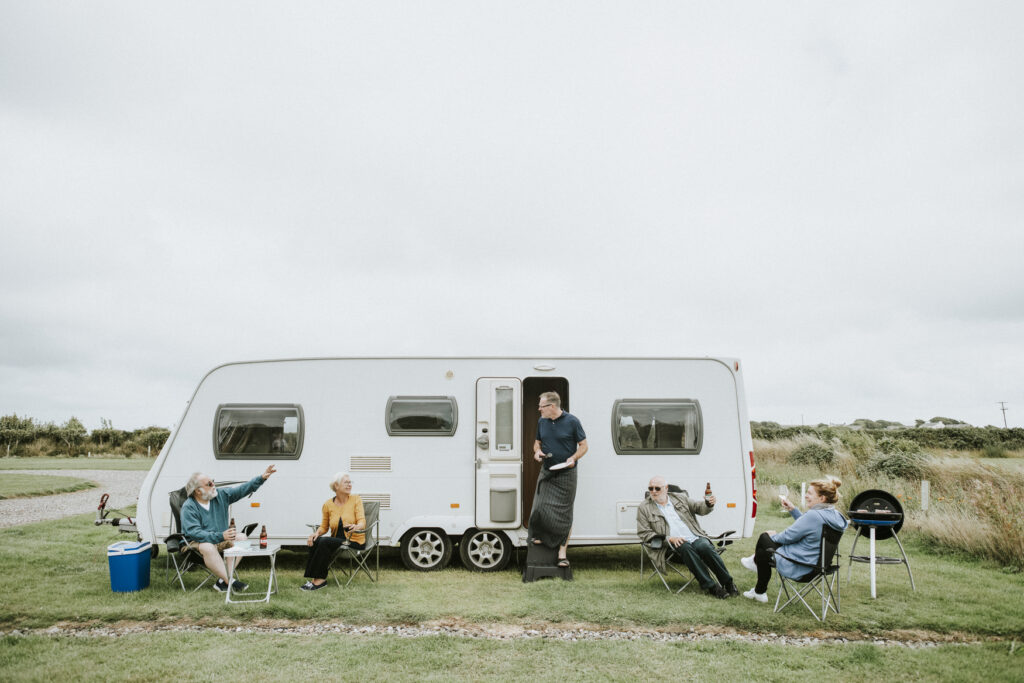
Types of Caravan Dehumidifiers
Portable Electric Dehumidifiers: How They Work and Their Advantages
When it comes to combating excess moisture in your caravan, portable electric dehumidifiers are a popular choice. These handy devices work by drawing in the moist air from your caravan’s surroundings and passing it over chilled coils. As the air cools, the moisture condenses into water droplets, which are then collected in a reservoir or drained through a hose.
One of the biggest advantages of portable electric dehumidifiers is their convenience. They are typically lightweight and compact, making them easy to move around and position wherever you need them most.
Additionally, most models come with adjustable humidity settings, allowing you to customize the level of moisture removal based on your specific needs. Some units even have built-in humidistats that automatically control the humidity levels for optimal comfort.
Desiccant Dehumidifiers: Features and Benefits for Caravans
Desiccant dehumidifiers offer an alternative solution for combating excess humidity in caravans. Unlike electric dehumidifiers that rely on cooling coils, desiccant models use a moisture-absorbing material known as a desiccant wheel or rotor.
The moisture-laden air passes over this wheel, where the desiccant absorbs the excess water vapor before releasing dry air back into your caravan. One notable advantage of desiccant dehumidifiers is their ability to operate effectively even at lower temperatures.
This makes them an excellent choice for winter caravanning when traditional electric dehumidifiers may struggle due to cold outdoor temperatures. Additionally, desiccant models tend to operate more quietly than their electric counterparts, making them ideal for caravanners who value peace and quiet during their travels.
Mini Dehumidifiers: Compact Options for Small Spaces
If you have limited space in your caravan or only need to target specific areas prone to excess moisture, mini dehumidifiers are worth considering. These pint-sized powerhouses may be small in size, but they can still effectively reduce humidity levels in confined spaces like closets, cupboards, or small rooms.
Mini dehumidifiers often utilize similar technology as their larger counterparts, such as electric or desiccant systems. However, their compact design allows for easy placement in tight spots where larger units would be impractical.
Some models even come with rechargeable batteries or USB adapters, providing additional versatility and portability. When it comes to choosing a caravan dehumidifier, you have various options to suit your specific needs.
Portable electric dehumidifiers offer convenience and adjustable settings, making them suitable for most caravanning situations. Desiccant dehumidifiers excel at operating in colder temperatures and provide quiet operation for those seeking a peaceful environment.
For smaller spaces or targeted moisture control, mini dehumidifiers offer compact solutions that can fit almost anywhere. Consider the size of your caravan and your unique requirements when selecting the type of dehumidifier that will best keep excessive humidity at bay during your travels.
Choosing the Right Dehumidifier for Your Caravan
Calculating the size and capacity needed for your caravan
When it comes to selecting the perfect dehumidifier for your beloved caravan, size matters. But fear not, as calculating the appropriate size and capacity is easier than you might think. To begin with, you need to determine the cubic footage of your caravan interior.
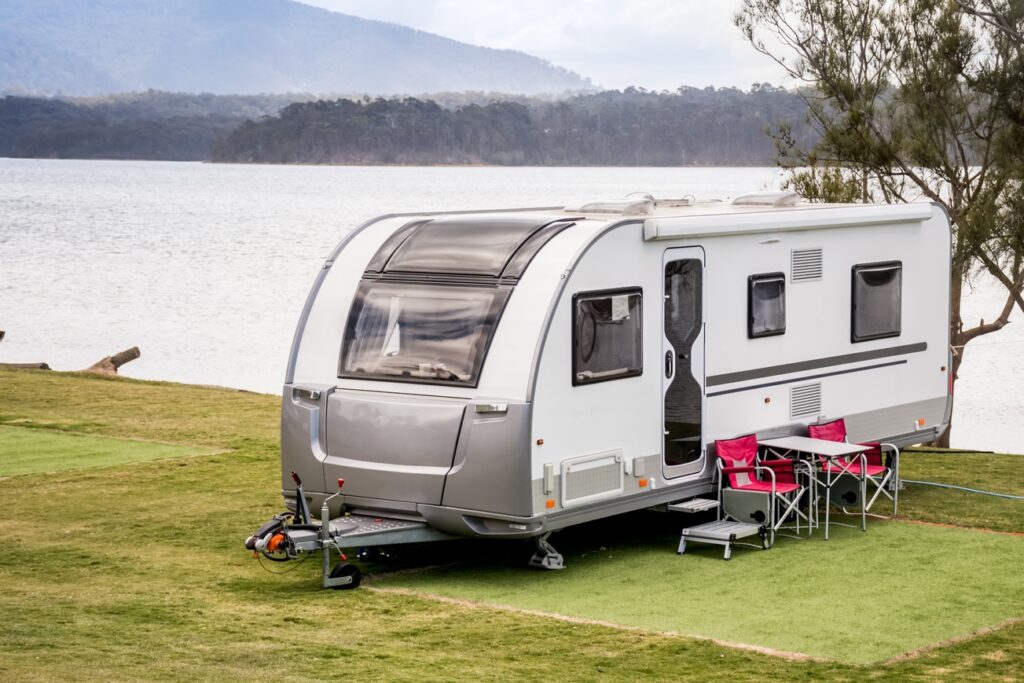
TIP: This can be done by multiplying the length, width, and height of each individual space within your mobile abode. Add up these measurements to get a total cubic footage that will serve as a guide for choosing a dehumidifier.
Determining the cubic footage of your caravan interior
To illustrate this further, let’s say your caravan measures 20 feet in length, 10 feet in width, and 8 feet in height. Multiplying these three dimensions (20 x 10 x 8) gives you a total cubic footage of 1,600 cubic feet. This figure allows you to narrow down your search and focus on dehumidifiers suitable for spaces of that particular size.
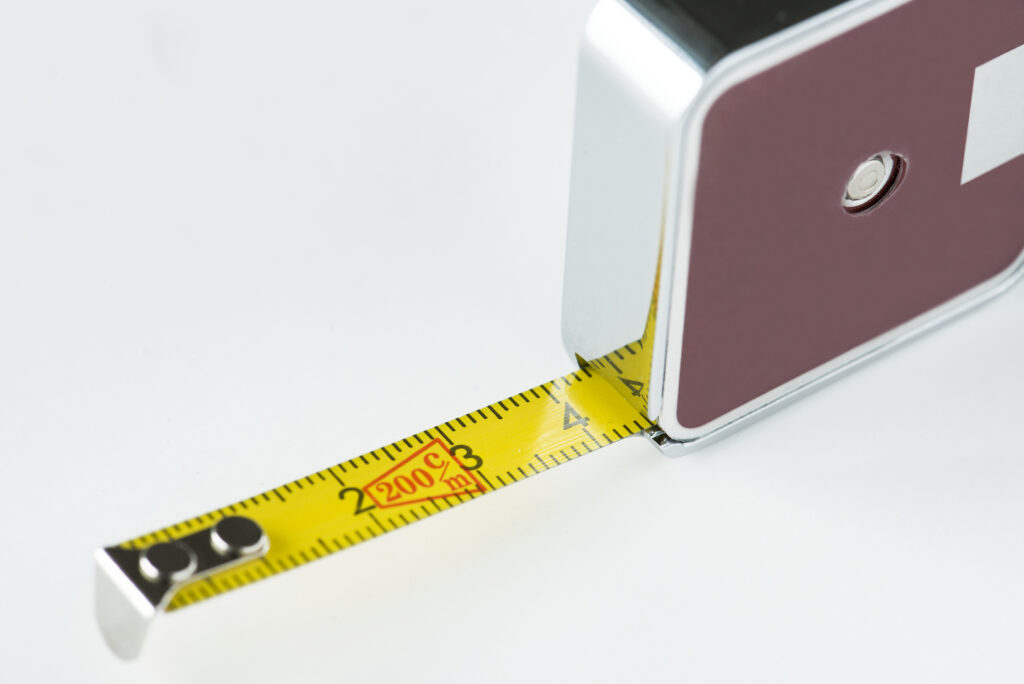
Matching the capacity to the specific moisture issues you face
Once armed with the knowledge of your caravan’s cubic footage, it’s crucial to consider its specific moisture issues. Are you battling with mild condensation or facing more severe dampness problems?
Assessing this will help determine what capacity is needed for optimal performance. Generally speaking, smaller units are sufficient for combating minor moisture concerns while larger capacities are better equipped to combat excess humidity in larger caravans or areas prone to significant moisture buildup.
Considering energy efficiency ratings and power requirements
Now that we have tackled size and capacity considerations let’s delve into energy efficiency ratings and power requirements – vital factors when selecting an efficient dehumidifier for your mobile home. Energy efficiency ratings indicate how effectively the unit removes moisture while consuming minimal power.
These ratings help you choose eco-friendly options that won’t drain your battery or electricity supply during your caravanning adventures. Additionally, be sure to check the power requirements of your chosen dehumidifier to ensure it aligns with your caravan’s electrical system and outlets.
With these considerations in mind, you’ll be well on your way to finding a dehumidifier that perfectly matches the size and needs of your caravan, while also being energy efficient and easy to use. Remember, selecting the right dehumidifier will not only protect against moisture-related problems but also optimize the overall comfort and longevity of your cherished mobile abode.
Tips for Using a Caravan Dehumidifier Effectively
Locating problem areas prone to excess moisture buildup
When it comes to effectively using a caravan dehumidifier, the first step is to identify the problem areas in your caravan that are prone to excess moisture buildup. These are typically spaces where dampness and condensation tend to accumulate, such as near windows or doors, in closets, or under sinks.
TIP: Take a thorough walk-through of your caravan and feel for any damp surfaces or musty smells. By pinpointing these trouble spots, you can strategically place the dehumidifier in these areas to target and eliminate excess moisture.
Ensuring proper air circulation around the dehumidifier
Proper air circulation is crucial for maximizing the efficiency of your caravan dehumidifier. When positioning the device, make sure to leave sufficient space around it for air to flow freely. Avoid tucking it away in cramped corners or behind furniture where airflow may be restricted.
Instead, opt for an open area where the unit can work its magic effectively. Additionally, keep doors and windows closed when using the dehumidifier to prevent external humidity from interfering with its performance.
Utilizing additional techniques like ventilation or insulation
While a caravan dehumidifier alone can do wonders in controlling excess moisture levels, combining it with other techniques can further enhance its effectiveness. One such technique is proper ventilation.
Make use of extractor fans or open windows when cooking or showering inside your caravan to allow moist air escape easily. Furthermore, consider using insulation materials on walls and floors to prevent cold surfaces from attracting condensation.
By creating an environment that discourages moisture accumulation, you’ll reduce the workload on your dehumidifier and promote a drier living space. By following these tips—locating problem areas prone to excess moisture buildup, ensuring proper air circulation around the dehumidifier, and utilizing additional techniques like ventilation or insulation—you can make the most of your caravan dehumidifier and create a comfortable, dry atmosphere for your travels.
Remember that maintaining a healthy humidity level not only preserves the integrity of your caravan’s interior but also safeguards against potential health issues caused by mold and mildew. So, go ahead and take control of moisture in your caravan with these practical tips!
Maintenance and Care for Your Caravan Dehumidifier
Cleaning and regular maintenance routines
Taking care of your caravan dehumidifier is essential to ensure its optimal performance. Regular cleaning will prevent dust and debris from clogging the filters, coils, and water collection reservoirs. Begin by switching off the dehumidifier and disconnecting it from the power source.
Gently remove the filters and wash them with mild soap and water. Allow them to dry completely before reattaching them.
Next, clean the coils using a soft brush or a vacuum cleaner with a brush attachment to remove any accumulated dust or dirt. For stubborn grime, you can use a mixture of water and mild detergent.
Again, make sure everything is dry before reassembling. Don’t forget about emptying or cleaning the water collection reservoir regularly.
This helps prevent mold growth and unpleasant odors from developing. Follow the manufacturer’s instructions on how to safely remove, empty, and clean the reservoir.
Checking for any signs
Apart from regular cleaning, it’s essential to keep an eye out for any signs that may indicate your caravan dehumidifier needs attention or repair. Check for leaks around the unit or excessive condensation on windows that could suggest a malfunctioning device. Additionally, pay attention to unusual noises such as grinding or rattling sounds that could signify issues with internal components.
TIP: If you notice decreased performance in moisture removal despite proper maintenance, consider contacting a professional technician to diagnose potential problems.
Remember that preventive measures such as routine maintenance can extend your dehumidifier’s lifespan while ensuring consistent performance in keeping your caravan free from excess moisture-related issues. Conclusion:
Properly maintaining your caravan dehumidifier ensures its longevity while maximizing its effectiveness in reducing humidity levels within your cherished mobile home away from home. By regularly cleaning filters, coils, and water collection reservoirs, you can prevent clogging and maintain optimal functionality. Additionally, keeping an eye out for signs of malfunction or decreased performance allows for proactive repair or replacement when necessary.
With a well-maintained caravan dehumidifier, you can enjoy worry-free journeys with a dry and comfortable interior. So, embrace the joy of traveling without the dampness!
Products we recommend for Caravans in the UK
BEST for Caravans Meaco DD8L Portable
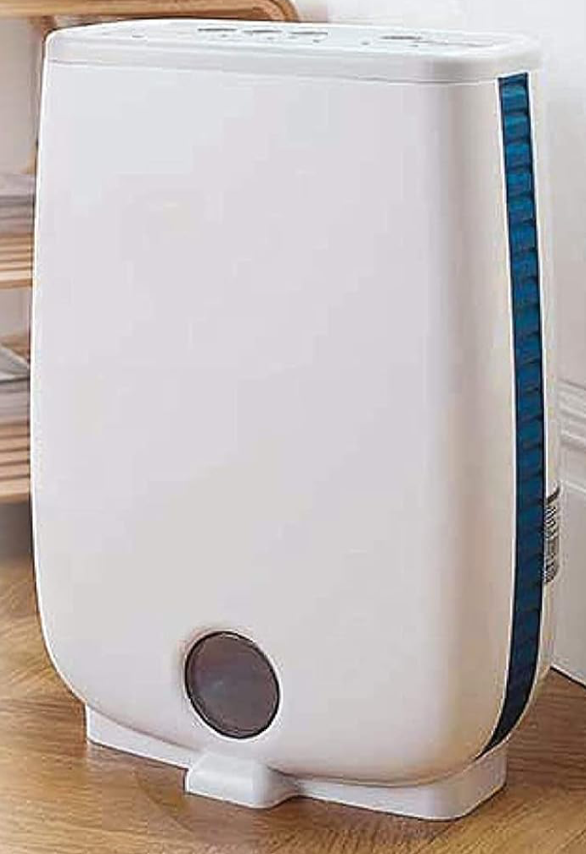
Introducing the Meaco DD8L – your lightweight ally in the battle against humidity!
Weighing just 6.4kg, this portable desiccant dehumidifier is a true featherweight, making it less than half the weight of some bulky models. And guess what? It won’t wake up the whole house with its whisper-quiet operation, boasting a noise rating of just 39dB on its lowest fan setting.
Designed for convenience, the DD8L features a compact build with a modest 2-liter water tank. It may not be the best fit for sprawling homes, but it’s a superhero when it comes to dehumidifying garages or single rooms. Plus, it’s a breeze to move around – thanks to its lightweight design and handy carrying handle. Holiday plans? No problem. Take it along!
With a maximum extraction rate of 7.5 liters per day, the DD8L kicks humidity to the curb, especially in cooler rooms. Need some warmth? It’s got you covered, as this little champion also generates heat.
Let’s talk features! The DD8L comes with a timer, so you can set it for just the right amount of time, and a laundry mode for your damp laundry days. While it might not have a digital control panel, its simplicity is its strength.
For a nimble and efficient dehumidifier that excels in smaller spaces, the Meaco DD8L Portable is your trusty sidekick!
Product Pros
Product Cons
Specs:
| Brand | Meaco |
| Item weight | 6.4 kg |
| Capacity | 8 litres |
| Weight Tank Volume | 2 litres |
| Noise Level | 15 dB |
| Voltage | 240v |
| STAR RATING | 4.8 |
Best Quiet Meaco 20L Low Energy Dehumidifier and Air Purifier 2
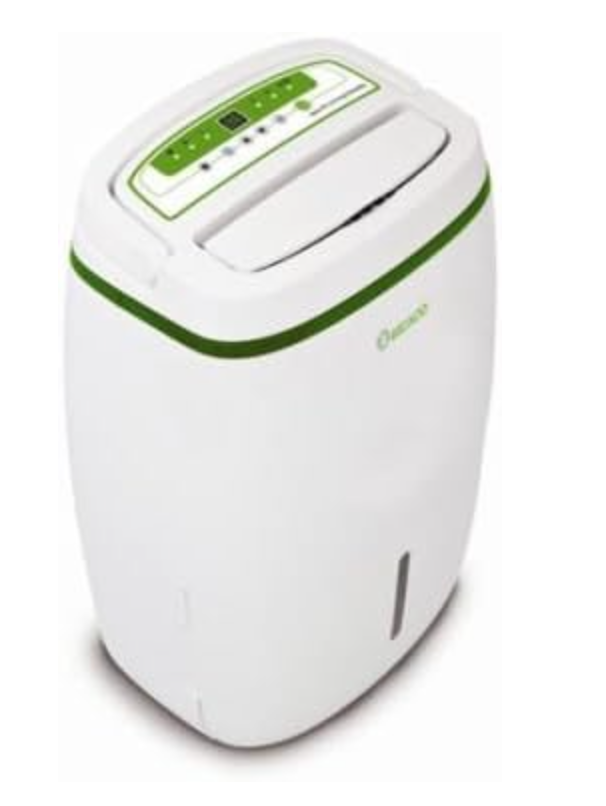
Meet the Meaco Low Energy – your go-to buddy for whole-house dehumidification!
This refrigerant dehumidifier is a rock star in higher temperatures and humid conditions, swiftly removing excess water even when the mercury drops. And guess what? It’s as energy-efficient as it claims to be!
Designed with your comfort in mind, the Low Energy consumes a mere 255W, although it can vary between 170W and 300W based on the temperature and humidity. Trust us; your electricity bills will thank you!
But that’s not all – this cool machine offers more features than a blockbuster movie. There’s an optional HEPA filter for cleaner air, a digital display to keep you in the loop on your room’s status, an off timer for convenience, and two fan speeds to cater to your preferences. With 12 humidity levels ranging from 30% to 80%, you’ve got options!
Oh, did we mention the thoughtful extras? A child lock ensures curious little hands stay away, and if you’re not keen on emptying the water tank, go for the continuous drainage option.
This large dehumidifier isn’t just efficient; it’s relatively quiet, sports a generous 6-liter water tank, and won’t guzzle too much power. Sure, it’s a bit on the bulkier side at 13.7kg, but hey, good things come in larger packages, right?
When it comes to reliable home dehumidification, the Meaco Low Energy is a heavyweight champion!
Product Pros
Product Cons
Specs:
| Brand | Meaco |
| Item weight | 12.6 Kilograms |
| Capacity | 20 litres |
| Weight Tank Volume | 20 litres |
| Noise Level | 46dB |
| POWER | 240v |
| STAR RATING | 4.7 |
Best Value Pro Breeze PB-02 Compct
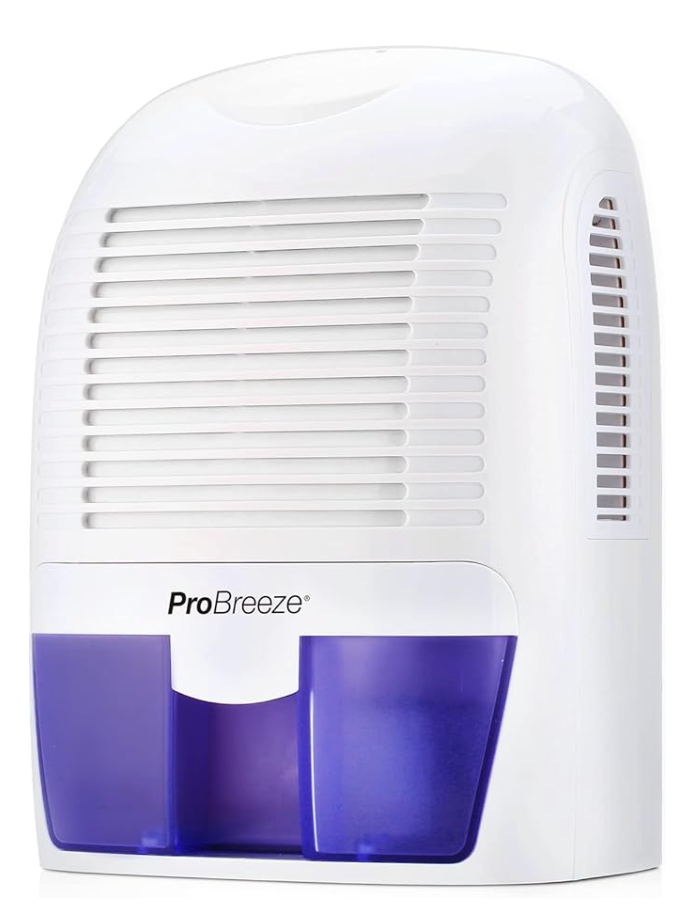
Meet the Best Value Pro Breeze PB-02 Compact, your budget-friendly companion in the battle against damp and condensation!
This mini peltier dehumidifier may have a petite water tank and a modest extraction rate compared to larger models, but it’s perfect for tackling humidity in a cozy room without breaking the bank.
Unlike other dehumidifiers, the PB-02 uses peltier technology, making it not just budget-friendly but also quiet. With a 500ml water tank and a maximum extraction rate of 250ml per day, you won’t need to rush to empty it frequently.
Don’t let its small size fool you – the PB-02 is a champ at removing moisture from small rooms. Weighing just 1.1kg, it’s lightweight and comes with convenient features like automatic shut-off when the tank is full and a full-tank indicator. Plus, it sips power, requiring only 20W to keep your space dry.
Perfect for targeted dampness in specific rooms or even in caravans, the Pro Breeze is an affordable alternative. While it might not match the extraction rates of larger models and isn’t ideal for multiple rooms, it’s a practical choice for those realistic expectations.
Product Pros
Product Cons
Specs:
| Brand | Pro Breeze |
| Item weight | 1.85 kg |
| Capacity | 1500 Millilitres |
| Weight Tank Volume | 1500 Millilitres |
| POWER | 240v |
| STAR RATING | 4.1 |
Best Humidity meter Protmex PT6508 Temperature Humidity Meter
Introducing the PT6508 Psychrometer HVAC, a cutting-edge digital device that seamlessly integrates the features of a humidity meter, temperature meter, wet bulb temperature gauge, and dew point temperature indicator. The dew point, a crucial metric, gauges the amount of water vapor present in the air.
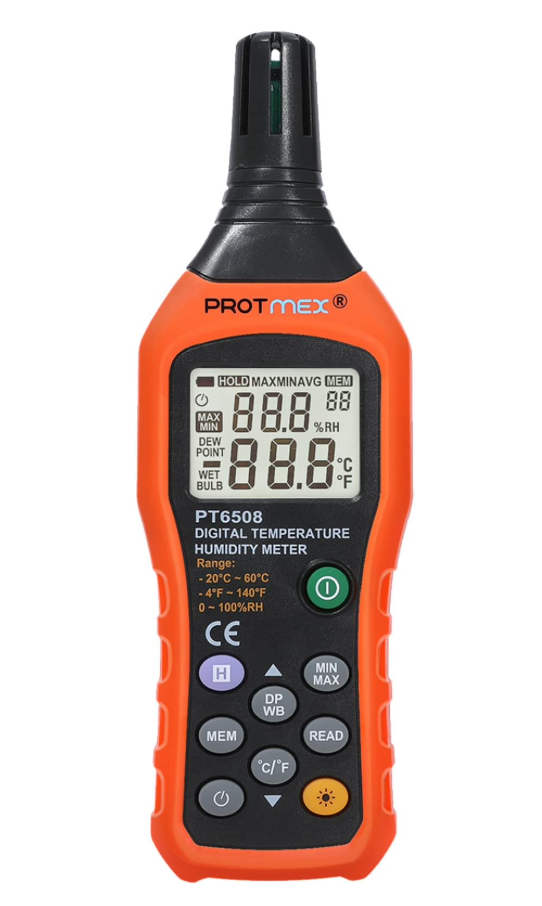
Product Pros
Product Cons
Spec
| Brand | Protmex |
| Item weight | 0.28 Kilograms |
| Mounting type | Tabletop |
| Upper temperature rating | 140 Degrees Fahrenheit |
| Voltage | 1.5 Volts |
Q and A
Are dehumidifiers good for caravans?
Yes, dehumidifiers can be a good addition to caravans to help regulate the humidity levels. High humidity can lead to dampness, mold, and musty odors in a caravan, so a dehumidifier can help prevent these issues and maintain a comfortable environment. It is especially useful if you are camping in wet or humid conditions. Just make sure to properly size the dehumidifier for the size of your caravan and to empty the collected water regularly.
How do I stop moisture in my caravan?
1. Identify the source of the moisture: Check for any leaks in the roof, windows, or plumbing system. Address any issues causing water to enter the caravan.
2. Increase ventilation: Use vents or open windows and doors to allow for airflow, which can help reduce moisture buildup.
3. Use moisture-absorbing products: Silica gel, moisture absorber packets, or dehumidifiers can help reduce humidity inside the caravan.
4. Insulate and seal: Ensure that the caravan is properly insulated and sealed to prevent condensation buildup.
5. Keep the interior dry: Wipe down any surfaces that collect moisture, such as windows and countertops, and dry off wet items before bringing them inside.
6. Check the humidity levels: Use a hygrometer to monitor the humidity levels inside the caravan and take appropriate measures to maintain a healthy level (ideally between 30-50%).
7. Avoid drying laundry inside: Hang wet clothes outside the caravan to dry, as drying them inside can increase moisture in the air.
By taking these steps, you should be able to reduce and prevent moisture buildup in your caravan, creating a more comfortable and healthy living environment.
Are moisture traps good for caravans?
Yes, moisture traps, also known as dehumidifiers, can be beneficial for caravans. Caravans are typically enclosed spaces, and moisture can build up from cooking, bathing, and even breathing. This can lead to dampness, mold, and mildew, which can be harmful to both the caravan and its occupants. Using a moisture trap can help to reduce excess moisture in the air and prevent these problems. It is important to regularly empty and clean the moisture trap to ensure it continues to work effectively.
How do I reduce moisture in my caravan?
1. Use moisture-absorbing products: Place dehumidifying products such as silica gel or moisture-absorbing crystals throughout the caravan to help reduce excess moisture in the air.
2. Ventilation: Ensure good ventilation by opening windows and roof vents regularly, especially during cooking, showering, and sleeping.
3. Insulation: Properly insulate the caravan to prevent condensation and reduce moisture buildup.
4. Seal windows and doors: Check for any leaks around windows and doors and seal them to prevent moisture from entering.
5. Use an air dryer: Consider using a portable dehumidifier or air dryer to reduce moisture in the air.
6. Keep it clean and dry: Wipe down surfaces, dry clothes outside or in a designated area, and clean up any spills or moisture promptly to prevent mold and mildew growth.
7. Monitor humidity levels: Use a humidity monitor to keep track of the moisture levels in the caravan and take action if it becomes too high.
Is it good to use a dehumidifier in a camper?
Yes, using a dehumidifier in a camper can be beneficial, especially in high-humidity areas or during humid seasons. It can help maintain a comfortable and healthy environment by reducing excess moisture in the air, preventing mold and mildew growth, and reducing musty odors. However, it’s important to ensure that the dehumidifier is properly sized for the space and that it is maintained and emptied regularly to avoid any potential issues.
Where should a dehumidifier be placed in a caravan?
A dehumidifier in a caravan should be placed in a central location where it can effectively circulate air throughout the living space. It should also be placed away from any obstacles that can block airflow, such as furniture or curtains. Additionally, it should be situated near a power source for easy operation. If possible, it should also be placed in a high humidity area, such as the bathroom or kitchen, to target problem areas.
How long to run a dehumidifier in a caravan?
The amount of time to run a dehumidifier in a caravan will depend on factors such as the level of humidity, the size of the caravan, and the weather conditions. In general, it is recommended to run a dehumidifier in a caravan for a few hours each day, especially during periods of high humidity. It is important to monitor the humidity levels and adjust the running time as needed to maintain a comfortable and dry environment.
Are dehumidifiers safe to run all the time?
Yes, it is generally safe to run a dehumidifier all the time. However, it is important to follow the manufacturer’s guidelines and recommendations for safe and efficient use of the dehumidifier. It is also important to regularly clean and maintain the dehumidifier to ensure safe and effective operation.
What can I put in my caravan to prevent damp?
1. Dehumidifier: A portable dehumidifier can help to remove excess moisture from the air in your caravan.
2. Moisture absorbers: Silica gel packets or moisture-absorbing crystals can be placed in key areas of the caravan to help absorb excess moisture.
3. Ventilation: Ensure that your caravan is well-ventilated by opening windows and using roof vents to allow air circulation.
4. Insulation: Proper insulation can help to regulate temperature and reduce condensation, preventing damp from forming.
5. Sealants: Check for any gaps or leaks in windows, doors, and roof vents, and use appropriate sealants to prevent water from entering the caravan.
6. Regular maintenance: Keep on top of maintenance tasks such as checking for leaks, cleaning gutters, and clearing any debris that could obstruct drainage.
7. Keep it dry: Wipe down any wet surfaces, dry out damp clothes, and avoid hanging wet towels or clothing inside the caravan.
By implementing these measures, you can help to prevent damp and maintain a comfortable and dry living environment in your caravan.
Conclusion
To sum up, dehumidifiers are indispensable for maintaining comfortable and healthy living spaces. Whether addressing moisture concerns, improving air quality, or enhancing overall well-being, these devices offer a practical solution. In conclusion, integrating a dehumidifier into your caravan/motorhome environment can make a substantial difference in creating a more pleasant living space.
Written by Rich
